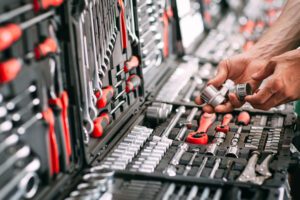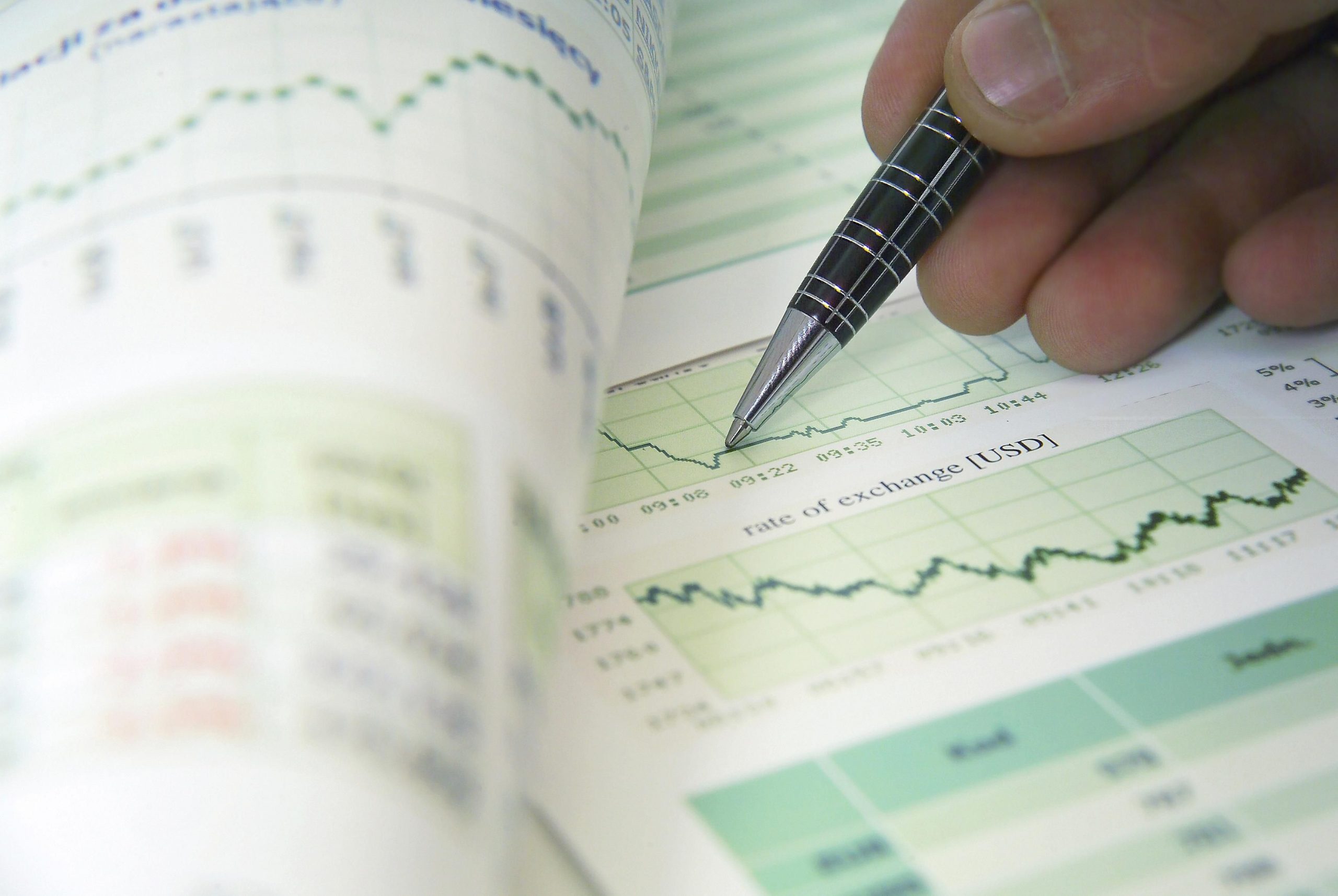Tips for maintaining your industrial tools and equipment

<?xml encoding=”utf-8″ ??>
In today’s fast-paced industrial landscape, the longevity and performance of your tools and equipment can significantly impact your business’s productivity, efficiency, and bottom line.
With the ever-increasing demands placed on these essential assets, it is imperative for businesses to implement comprehensive maintenance strategies to maximise their return on investment.
In this article, delve into the critical aspects of preventive maintenance, proper storage, and timely repairs, ensuring that your invaluable resources continue to serve you effectively for years to come.
The importance of maintaining industrial tools and equipment
Maintaining industrial tools and equipment is of paramount importance in ensuring the smooth and efficient operation of any production facility. Proper maintenance not only prolongs the lifespan of these vital assets but also prevents unexpected breakdowns, reducing costly downtime and minimising production delays.
Regular cleaning and inspection
Regular cleaning and inspection of industrial tools and equipment are essential for maintaining their optimal performance, extending their lifespan, and ensuring workplace safety. Neglecting this crucial aspect of maintenance can lead to accelerated wear and tear, equipment failure, and even hazardous working conditions.
Regular inspection helps identify any signs of wear, cracks, or damage before they escalate into more significant issues. This proactive approach allows for timely repairs, reducing the chances of catastrophic equipment failure and costly downtime. It can also help prevent accidents caused by malfunctioning or compromised equipment, fostering a safer working environment for employees.
The frequency of cleaning and inspection largely depends on the type of equipment, its usage, and the environment in which it operates. As a general rule, tools and equipment that are heavily used or exposed to harsh conditions should be cleaned and inspected more frequently.
Tips for cleaning and inspecting tools and equipment
Develop a regular schedule for cleaning and inspection based on the manufacturer’s recommendations and your facility’s specific needs. You should also ensure that all employees are aware of this schedule and their responsibilities.
Choosing cleaning solutions and methods that are compatible with your equipment’s materials and components is also something to keep in mind- you should avoid abrasive materials that may cause scratches or damage.
Examine your tools and equipment for any visible signs of wear, such as cracks, corrosion, or loose components. Make sure to also pay particular attention to high-stress areas and parts that are subjected to significant wear.
Understanding how to use your equipment properly
Properly understanding how to use your equipment is crucial for ensuring its safe and efficient operation. Operating equipment without adequate knowledge can result in suboptimal performance, increased wear, and even accidents or injuries.
Familiarity with equipment specifications, functionality, and limitations enables operators to optimise their use, ensuring the most efficient and effective outcomes for each task. This not only contributes to improved productivity but also reduces the risk of equipment damage or malfunction caused by improper operation.
Understanding how to use equipment correctly is also directly linked to its maintenance requirements. Proper usage reduces unnecessary wear and tear, extending the lifespan of tools and equipment. Moreover, knowledgeable operators are more likely to identify potential issues or signs of wear during operation, enabling timely maintenance and repairs. For example, bandsaw blades are just one industrial piece of equipment that require knowledge of use and proper maintenance to ensure optimal cutting performance and extended blade life.
Many industries have specific regulations and standards governing the use of tools and equipment. Adequate knowledge and training ensure that operators can adhere to these requirements, reducing the risk of non-compliance and its associated penalties.
Tips for ensuring proper equipment usage
IProvide comprehensive training programs for employees, ensuring that they are well-versed in the operation, maintenance, and safety procedures for each piece of equipment, and also make sure to regularly update and refresh training to account for new equipment or changes in industry standards.
It can also be beneficial to develop clear, concise, and easily accessible documentation for each piece of equipment, outlining its proper usage, maintenance requirements, and safety guidelines.
Encouraging open communication is key- you should foster a workplace culture where employees feel comfortable asking questions or seeking clarification regarding equipment operation. Encourage experienced team members to share their knowledge and assist newer employees in learning proper usage technology.
By prioritising the understanding of proper equipment usage, businesses can significantly enhance their productivity, safety, and long-term cost savings, ensuring that their valuable assets continue to operate at peak performance.
Proper storage
Proper storage plays a critical role in maintaining the integrity and longevity of industrial tools and equipment. By ensuring that these valuable assets are stored in suitable conditions, businesses can protect their investments, reduce unnecessary wear, and maintain their equipment’s optimal performance.
You should store tools and equipment in a temperature-controlled environment to prevent damage caused by extreme heat or cold. Additionally, maintain a consistent humidity level to minimise the risk of corrosion and rust. Ideal humidity levels typically range between 40-50%, depending on the specific equipment and materials.
It’s also important to keep storage areas clean and free of dust, debris, and contaminants to prevent equipment deterioration. Other tips include shielding tools and equipment from moisture and direct sunlight to avoid rust and corrosion, and ensuring proper airflow to help dissipate heat, minimise moisture buildup, and prevent the accumulation of harmful gases or vapours in storage areas.
Tips for storing tools and equipment
Invest in suitable storage solutions, such as toolboxes, cabinets, shelves, and racks, that are designed to accommodate the specific dimensions and weight of your tools and equipment. These solutions should also provide adequate protection from environmental factors. Storing tools and equipment off the ground can also help prevent damage from moisture, spills, or debris, so it can be beneficial to use shelving, pallets, or raised platforms to elevate your assets.
Clearly label storage locations to streamline access and retrieval, ensuring that employees can quickly locate the tools and equipment they need. Organise storage areas in a logical manner, grouping similar tools or equipment together. You should also implement security measures, such as locks or access control systems, to protect your valuable tools and equipment from theft or unauthorised use.
By prioritising proper storage practices, businesses can safeguard their industrial tools and equipment, ensuring that these assets continue to provide reliable service and support optimal production processes.
Maintenance schedule
By systematically planning and tracking routine maintenance tasks, businesses can prevent unexpected equipment failure, optimise resource allocation, and ensure that their assets remain in optimal working condition.
Begin by compiling a comprehensive inventory of all tools and equipment in your facility. This list should include details such as the make, model, age, and maintenance history of each asset. Then, consult the manufacturer’s guidelines for recommended maintenance intervals and procedures for each piece of equipment. These recommendations will serve as a starting point for your maintenance schedule.
Adjust the maintenance schedule according to your facility’s specific needs, taking into account factors such as equipment usage patterns and the operating environment. For example, equipment that is heavily used or exposed to harsh conditions may require more frequent maintenance.
Prioritise maintenance tasks based on factors such as the criticality of the equipment, safety concerns, and potential impact on productivity. Ensure that high-priority tasks are scheduled and performed in a timely manner.
Tips for following a maintenance schedule
Maintain detailed records of all maintenance activities, including dates, work performed, and any issues identified or resolved. By using a maintenance management system or software, this will allow you to track and monitor your maintenance schedule effectively.
Ensure that all employees are aware of the maintenance schedule and their responsibilities in adhering to it. If this is something that needs refreshing in your company, then provide regular training on maintenance procedures and safety protocols.
Periodically review and update your maintenance schedule to account for changes in equipment usage, environmental factors, or new industry best practices. Make adjustments as needed to ensure that your maintenance plan remains effective and relevant.




